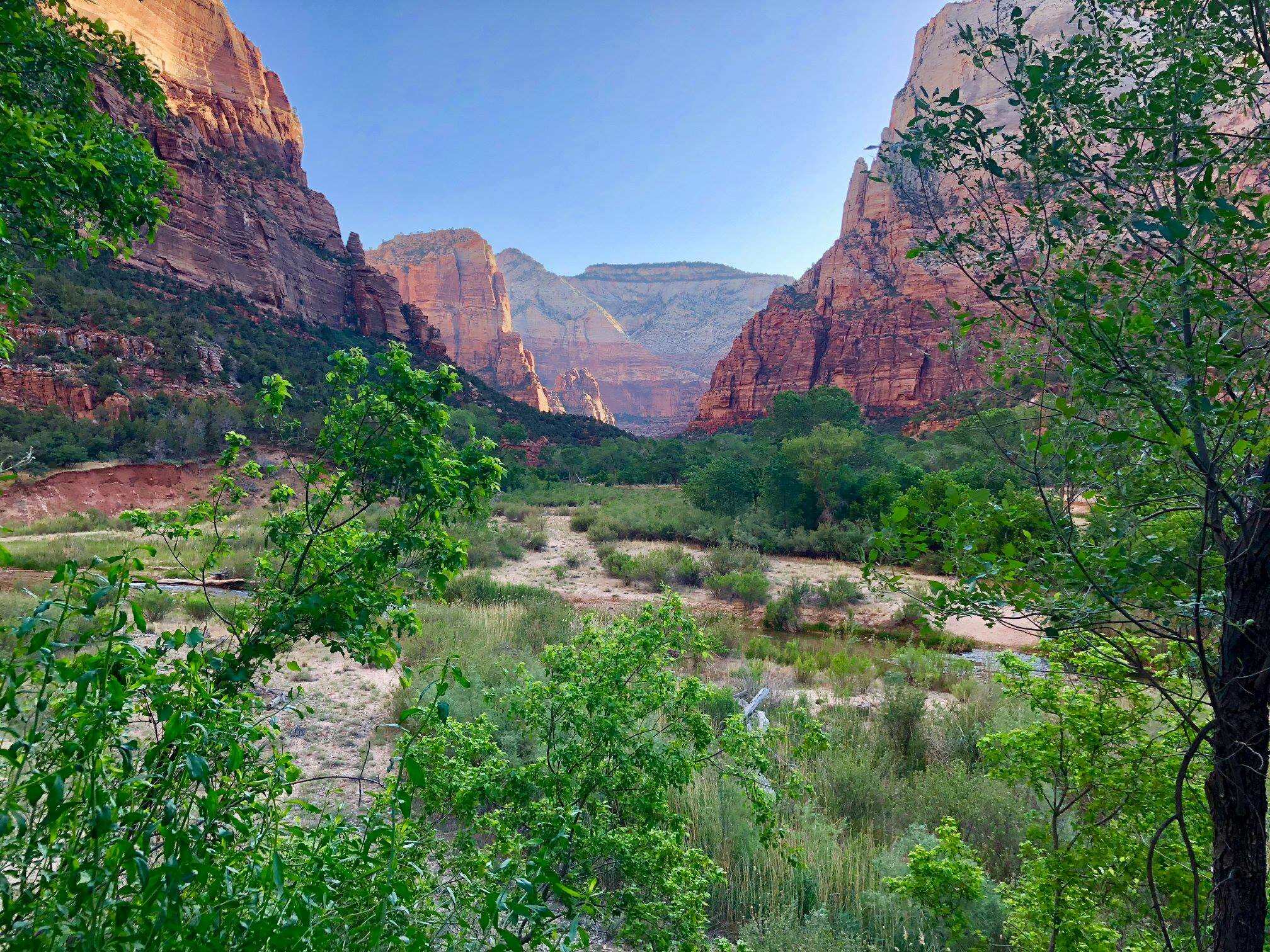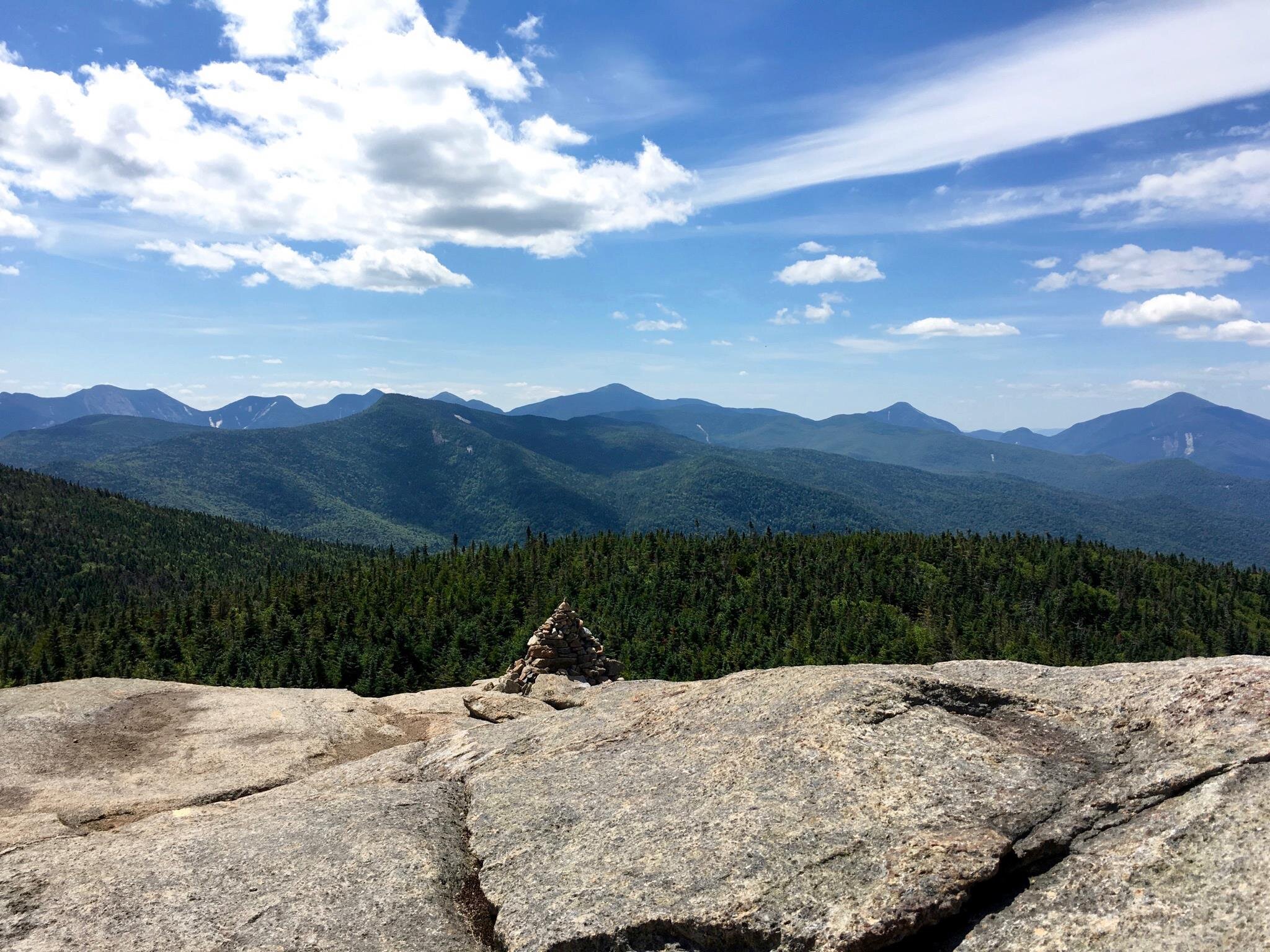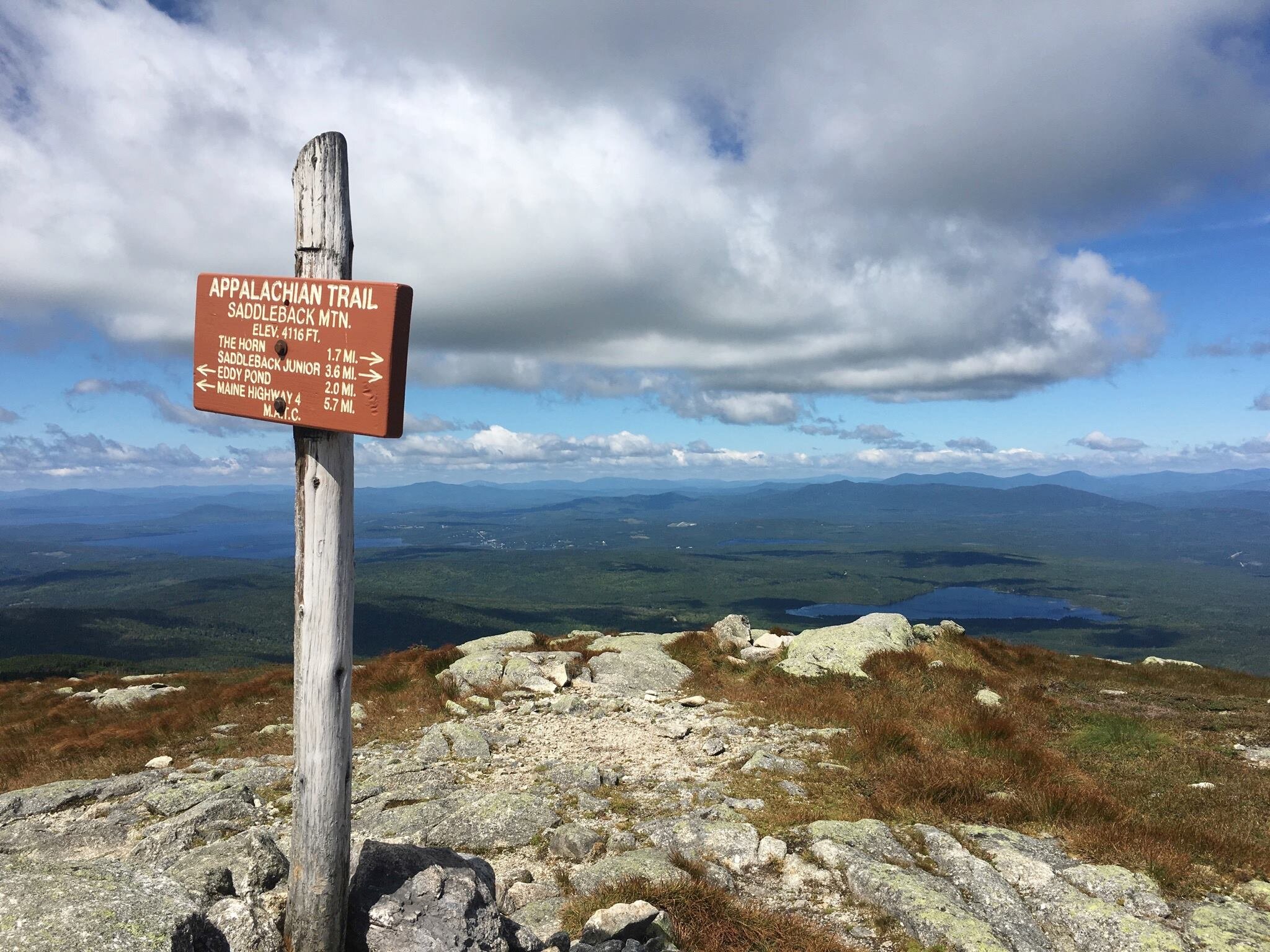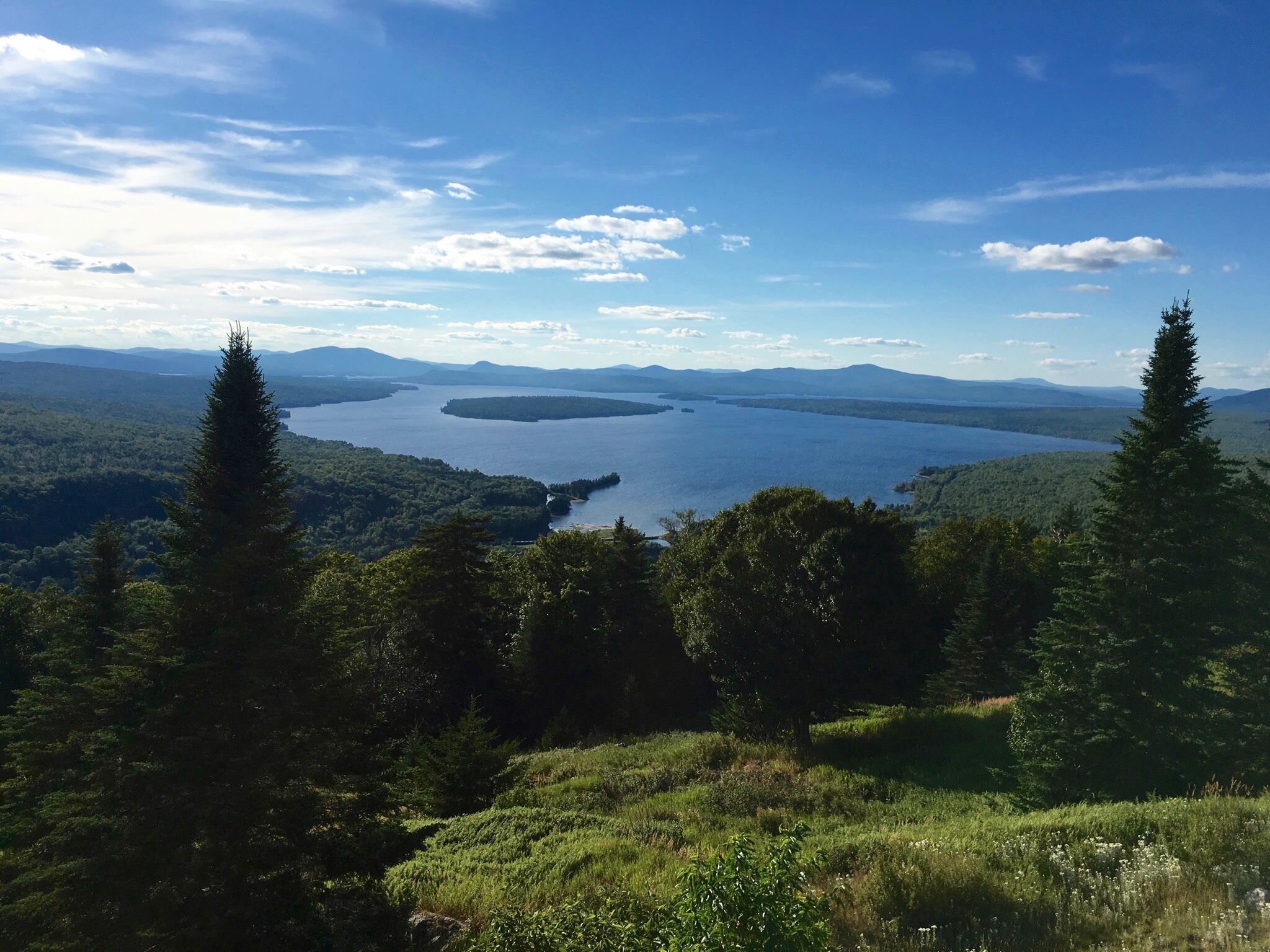Getting Back to Our Roots - Could Spending Time in Nature Improve Your Physical and Mental Health
Getting Back to Our Roots - Could Spending Time in Nature Improve Your Physical and Mental Health
As a young child I spent most of my free time playing and exploring outdoors. Fast forward a few years and the amount of time I spent outdoors became less, and I largely blame this lessened time on the advent of the internet, more robust computers and readily available video games. The world around me suddenly became less interesting as I had an entire new world to explore at my finger tips. I could build roller coasters, chat with friends online, play fanasty baseball, and much more. While I still enjoyed being outdoors, I enjoyed my indoor play more. Today's technology is more robust than it was when I was a kid, and I often wonder what the implications of technology and artificial systems could be on human health. I'm no longer my teenager self, who spends most of his time "exploring" through technology. On the other hand, I'm not anti-technology either. I do not deny that technological advances do have many benefits, however I believe there are many pitfalls as well. Every aspect of life needs a yin and yang component to it, too much of anyone thing can be problematic.
Today Americans spend 93% of their time indoors (1) which leaves very little time for outdoor activity. Children today spend significantly less time playing outdoors than their parents. The amount of time is not measured in hours but rather minutes. Today children spend only four to seven minutes of unstructured play per day while spending an average of seven and half hours in front of electronics (2). These numbers do not include the years 2020 and 2021, and if I had to guess these numbers have gone up further. According to 2017 data from the Pentagon, 7 out of 10 young adults would not be able to serve in the military due to the fact that they would not be able to met physical or mental health requirements (3). What does this mean for our health? Could modern technologies be the cause of physical and mental decline? This begs to question, is this our new normal? Could our children stand to spend more time outdoors rather than inside in front of a TV? I am hopeful that this blog will be able to answer these questions and more. Without further a-do let's discuss the health benefits of spending time in nature.
Humans are Naturally Drawn to Nature
According to Edward Wilson's theory of Biophilia, humans are drawn toward their natural surroundings. Often times nature can be seen in symbolic proverbs and idioms such as, "The early bird gets the worm", "the straw that broke the camel's back", "like a fish out of water" and "birds of a feather flock together". According to the theory of biophilia these exist as a result of humans being drawn to nature and other life-forms. Wilson stated that this is a genetic basis for all humans regardless of where they reside. Human's affinity for nature can be reported back as early as the start of Taoism, when they discussed the basic idea that human life is only part of the larger process of nature. Thus human life makes the most sense when in harmony with nature.
In 1984, Robert Ulrich published his findings on how a view out of a hospital window could impact recovery and pain management. His findings demonstrated that patients whose window looked out into nature rather than a brick wall recovered more quickly and suffered from less pain (4). Additionally, those patients who looked out into nature had a more positive mindset. Even in maximum security prison, nature demonstrates to help inmates "feel better". Those inmates who watched 1 hour of nature videos during their recreation time had a 26 percent fewer violent infractions than their peers (5). Another an example of nature and it's effects on inmates would be Halden, a maximum security prison in Norway which recommends nature therapy to the inmates. In fact, Halden pays inmates just to get out of their cell. It's important to note that the central idea behind Halden and most of Norway's prisons to turn a criminal into a good neighbor and when comparing their reoffending rate of 20% to the United States' 76.6%, I begin to wonder if exposure to nature could help individuals physically, mentally, and spiritually.
Urbanization - Creating Green Space and Nature Where it Does Not Exist
Now that we have a broad understanding of biophilia and some of the benefits of spending time in nature, I believe it is important to discuss how humans are leaving rural environments and heading into urban ones. In 1960, 33 percent of humans lived in an urban environment whereas today 56 percent of the global population live in an urban environment. It has been a long standing question of what draws individuals to an urban environment. It is the hope of a "high paying" job, prosperity or another factor that draws individuals to the city? This creates both pressure on the cities and the natural environment. As more humans flock to cities, demand for larger urban areas follow, which in turn means removal of natural environments. With the global population expected to be just shy of 10 billion by 2050, city growth is expected to grow to approximately 66 percent of the global population.
To large extent urban areas interact with the natural environment more than rural areas (6), The interaction is not the traditional sense of spending time forest bathing, hiking, etc but rather how the choices the urban environment chooses to make will impact the natural environment (i.e. air pollution, water pollution, removal of natural habitats) and thus human health. Therefore, a properly planned urban environment has the potential to be friendly to both human and environmental health. The key is to ensure there is enough green space by setting aside plenty of land for the creation of parks. By doing so, the city can satisfy the biophilic needs of humans, improve residents health as well as support the ecosystem within. Studies have shown that close proximity to green space has a positive effect on physical activity levels and cardiovascular health of the urban residents (7-10). Health benefits are not limited to physical - studies have shown that park and natural environmental can also improve mental health (11 - 12). Additionally, those who live in greener urban areas display more positivity (13), a reduction in depression (14), and lower levels of self-reported (15) and measured stress (16). Collectively the research above suggests that green space, urban parks, and general time spent outdoors has positive health benefit for both physical and mental health.
Putting Away Technology and Spending Time in Nature
Now that we know that there are health benefits to spending time in nature, it's important to discuss that this time should be spent with minimal technology. I once listened to a Ted talk by a professor at the University of Utah, who had a focus in researching the psychological benefits of spending time in nature. During a trip at Arches National Park (See Below) he was perplexed by the woman who's back was turned to landscape arch (the largest natural arch in the world). She was not having a photo taken but rather selling stocks on the trail. Unfortunately, this woman was not receiving the same health benefits as if she left the technology behind. Such benefits include, an improvement in short term memory, increase in creativity, decrease in theta brainwaves, decrease in rumination, among other health benefits.
Only 2% of the world's population is good at multitasking and for the other 98% multitasking creates a sense of "blindness" to the environment around them. In order to receive the health benefits of spending time in nature, the individual should limit the use of devices that would cause multitasking. The reasoning is multitasking increases the demand placed on the prefrontal cortex. Demand from email, phone calls, social media and other technologies drain our attentional resources and cause us to suffer from cognitive fatigue and thus lose our ability to focus, think creatively and critically. This is often referred to as directed attention fatigue. Most studies that show benefit from nature, are individuals who have spent their time free of distractions. In other words a picture or two of the views is different than trading stocks during your National Park trip.
Forest Bathing - A Phytoncide Bath? Yes, it's safe...
In Japan, a forest bathing is called “Shinrinyoku”, and is defined as a short leisurely visit to a forest. The primary reason for the visit is to receive the health benefits that nature provides. Earlier within this blog I discussed a some of the physical and mental health benefits and this section will be focused on one particular area within the body, the immune system.
Foresting bathing has been a long standing tradition in Eastern countries. In1982, the director of the Japanese Forest Agency hypothesized that heading into phytoncide-rich environment could promote better health and the term forest bathing was born. The reason that a forest is a phytoncide rich environment is due to the fact that all trees release chemical compounds known as phytoncides, which have antimicrobial properties that can kill or inhibit the growth of bacteria, microscopic fungi and protozoa. In simple terms phytoncides are the forest's version of an immune system. Some tress release phytoncides into the atmosphere which can protect an area of the forest rather than just itself. These types of trees are conifers, specifically young conifers. Not only do phytoncides protect the forest, but they could also help to protect human health. When an human spends time in nature there is an increase in natural killer cells (NK cells) and depending on the duration spent within the forest these increases can last up to 30 days (18, 19, 20). NK cells have an innate role within the immune system and their role is to manage and control tumors, combat microbial infections and more. Additionally, a decrease in stress following a visit to the forest has been hypothesized to play a role in the increase of NK cells after forest bathing. Regardless of the cause, even as little as 20 minutes per day of forest and/or nature exposure could have beneficial effects on human health (21). All in all, spending time in nature seems like a great avenue to improve your health and best of all it's typically inexpensive or free.
What are your favorite activities to perform outdoors? Do you have a favorite place to explore? How much time do you like to spend outdoors? Let me know, I love learning how others get outside to enjoy nature.
About Our Acupuncture Clinic:
North Shore Acupuncture and Natural Medicine is an acupuncture clinic in Beverly, MA. We utilize acupuncture, Chinese herbal medicine and natural medicine to restore optimal health and wellness. Employing traditional and modern approaches to enhance your health and longevity.
References:
1) U.S. Environmental Protection Agency. 1989. Report to Congress on indoor air quality: Volume 2. EPA/400/1-89/001C. Washington, DC.
2) https://www.nrpa.org/uploadedFiles/nrpa.org/Advocacy/Children-in-Nature.pdf
3) Nolan Feeney, “Pentagon: 7 in 10 Youths Would Fail to Qualify for Military Service,” Time, June 2014, http://time.com/2938158/youth-fail-to-qualify-military-service/ (accessed January 4, 2018), and e-mail correspondence between the author and Jamie Lockhart, acting director of Mission: Readiness, on December 11, 2017.
4)Ulrich, R.S. 1984 | Science Volume 224, Issue 4647, Pages 420-421
5) University of Utah. "Nature imagery calms prisoners." ScienceDaily. ScienceDaily, 1 September 2017. <www.sciencedaily.com/releases/2017/09/170901093833.htm>.
6) Torrey, B. (2004) Urbanization: An Environmental Force to Be Reckoned With. Available at: http://www.prb.org/Publications/Articles/2004/UrbanizationAnEnvironmentalForcetoBeReckonedWith.aspx
7) Brown G, Schebella MF, Weber D. Using participatory GIS to measure physical activity and urban park benefits. Landscape and Urban Planning. 2014;121:34–44.
8) Godbey G, Mowen A. The benefits of physical activity provided by park and recreation services: The scientific evidence. Ashburn, VA: National Recreation and Park Association, 2010.
9) Cohen DA, McKenzie TL, Sehgal A, Williamson S, Golinelli D, Lurie N. Contribution of parks to physical activity. American Journal of Public Health. 2007;97(509–514).
10) West ST, Shores KA, Mudd LM. Association of available parkland, physical activity, and overweight in American's largest cities. Journal of Public Health Management Practice. 2012;18(5):423–30. pmid:22836533
11) Shanahan DF, Lin BB, Bush R, Gaston KJ, Dean JH, Barber E, et al. Toward improved health outcomes from urban nature. American Journal of Public Health. 2015;105:470–7. pmid:25602866
12) Russell R, Guerry AD, Balvanera P, Gould RK, Basurto X, Chan KMA, et al. Humans and nature: How knowing and experiencing nature affect well-being. Annual Review of Environment and Resources. 2013;38:473–502. 0.1146/annurev-environ-012312-110838.
13) Alcock I, White MP, Wheeler BW, Fleming LE, Depledge MH. Longitudinal effects on mental health of moving to greener and less green urban areas. Environmental Science & Technology. 2014;48:1247–55.
14) Miles R, Coutts C, Mohamadi A. Neighborhood urban form, social environment, and depression. Journal of Urban Health. 2012;89(1):1–18. pmid:22038283
15) Van den Berg AE, Maas J, Verheij RA, Groenewegen PP. Green space as a buffer between stressful life events and health. Social Science & Medicine. 2010;70(8):1203–10.
16) Ward Thompson C, Roe J, Aspinall P, Mitchell R, Clow A, Miller D. More green space is linked to less stress in deprived communities: Evidence from salivary cortisol patterns. Landscape and Urban Planning. 2012;105(3):221–9.
17) Aspinall P, Mavros P, Coyne R, Roe J. The urban brain: analysing outdoor physical activity with mobile EEG. Br J Sports Med. 2015 Feb;49(4):272-6. doi: 10.1136/bjsports-2012-091877. Epub 2013 Mar 6. PMID: 23467965.
18 Li Q. (2010). Effect of forest bathing trips on human immune function. Environmental health and preventive medicine, 15(1), 9–17. https://doi.org/10.1007/s12199-008-0068-3
19) Li Q, Morimoto K, Nakadai A, Inagaki H, Katsumata M, Shimizu T, Hirata Y, Hirata K, Suzuki H, Miyazaki Y, Kagawa T, Koyama Y, Ohira T, Takayama N, Krensky AM, Kawada T. Forest bathing enhances human natural killer activity and expression of anti-cancer proteins. Int J Immunopathol Pharmacol. 2007 Apr-Jun;20(2 Suppl 2):3-8. doi: 10.1177/03946320070200S202. PMID: 17903349.
20) Li Q, Morimoto K, Kobayashi M, Inagaki H, Katsumata M, Hirata Y, Hirata K, Suzuki H, Li YJ, Wakayama Y, Kawada T, Park BJ, Ohira T, Matsui N, Kagawa T, Miyazaki Y, Krensky AM. Visiting a forest, but not a city, increases human natural killer activity and expression of anti-cancer proteins. Int J Immunopathol Pharmacol. 2008 Jan-Mar;21(1):117-27. doi: 10.1177/039463200802100113. PMID: 18336737.
21) Frontiers. "Stressed? Take a 20-minute 'nature pill': Just 20 minutes of contact with nature will lower stress hormone levels, reveals new study." ScienceDaily. ScienceDaily, 4 April 2019. <www.sciencedaily.com/releases/2019/04/190404074915.htm>










